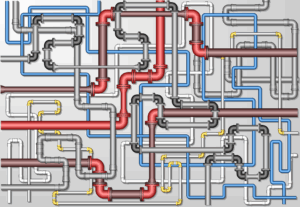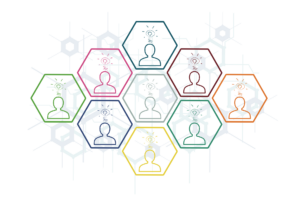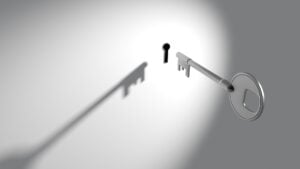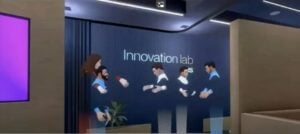The Self-Disruption Journey
In uncertain times, the fear and denial of disruption can hurt any business. Yet, “Responsible leaders who dare to anticipate disruption and take steps to self-inflict it to their organization in a smart and controlled way are best positioned for the future”—so makes the case for self-disruption by operational consultant, Patrick Giry-Deloison, in his insightful article, “Why Let Others Disrupt You? Take the Smart Self-Disruption Journey!” on Innovation Management. Giry-Deloison notes that the current business environment is fraught with change and challenges, from digitalization to globalization. Businesses, whether they are established companies or start-ups, must stay ahead of the curve, anticipate changes and take advantage of all their available resources from the angle of risk management and business strategy.
The author cites Netflix as an example of disruptive change. In 2011, Netflix decided to radically change its pricing model by increasing the price of DVD rentals and to promote the use of Internet streaming. “This ‘self-disruption’ by Netflix of its own flourishing business model was the result of a strategic analysis: rather than being overtaken by new players leveraging the new streaming technology over high speed Internet and trying to defend DVD rental at all cost, Netflix took the lead and was quick.”
The self-disruptive journey, then, is a means to anticipate the change, at scale, scope and speed. Giry-Deloison says the “purpose is to create the new conditions to allow the management team to put itself in the shoes of ‘disruptors’ of their company’s activities and lead a collective reflection on the strategy in a totally new framework. As a team, they set themselves the objective of answering together the question, ‘In the scope of our business, what transformations can be carried out to evolve and react better in the context of an external disruption?’” In essence, this gives management and the company the leeway to become agile entrepreneurs and creators, to develop and accelerate an innovative culture, optimize resources, integrate risk and to undergo a collective learning process.
As noted in Giry-Deloison’s blog, the self-disruption as a journey is further characterized by:
- A change of mindset, which goes from defensive to offensive, but without becoming aggressive.
- Highlighting, even questioning, what is left unsaid and shared beliefs.
- Collaborative and cross-cutting work to decompartmentalize the organization.
- A strong connection between strategic thinking and operational action.
- Acceptance of the principle of failure for certain of the ideas generated throughout the process, since some of the planned tracks will be modified or even abandoned down the way.
- A dynamic of innovation based on collective intelligence.
Defining Disruption
In All Things Innovation’s “Defining Disruptive Innovation,” we further looked at the theory, which some debate has been diluted. Disruptive innovation is often a phrase used to make a splash in the business world. Some may debate that the label has been applied carelessly at times to anyone shaking up the market. Yet, just what makes an innovation disruptive? It depends on your point of view. But some make the case that it still remains a gradual process of change, as a smaller competitor gains a foothold in a low-end or new market, and moves its product upmarket to challenge the incumbents. Disruptive innovation encompasses a transformation at the core of the business and the marketplace.
TMRE will be held this year from October 23-25, at the Gaylord Rockies Event & Convention Center, Denver, CO. The panel session, “Leading High-Performance Insights Teams Through Change and Disruption,” will look at how disruption – whether economic, from a re-org or some other outside factor – can also be seized as a moment for opportunity. This panel will cover how to lead efficient insights teams during change; tips for transforming people, processes and tech to better serve customers, and ways to communicate data and insights to the c-suite to influence business outcomes. The session will be held by Clay McKissack, Senior Vice President, Retail Sales & Market Insights, GE Lighting, and Elizabeth Oates, Senior Director, Consumer Insights, Ulta Beauty.
Embracing Change
Self-disruption refers to a deliberate strategy where an organization proactively disrupts its own business model, products, or processes to drive innovation and maintain competitiveness. By embracing self-disruption, organizations can pave the way for a successful innovation journey. Here’s how self-disruption can lead to innovation, according to ChatGPT:
- Encouraging a Culture of Continuous Improvement: Self-disruption forces an organization to critically assess its existing processes, products and strategies. This mindset of constant evaluation and improvement creates a culture where innovation is not just an occasional event but a continuous effort.
- Identifying New Opportunities: Disrupting one’s own business model or products often leads to the discovery of new opportunities. Through self-disruption, organizations can identify unmet customer needs, emerging trends, and untapped markets that can become the foundation for innovative offerings.
- Challenging Assumptions: Self-disruption prompts organizations to challenge their own assumptions about what works and what doesn’t. This process can lead to rethinking long-held beliefs and finding new ways to solve problems or meet customer demands.
- Fostering Creative Thinking: The need for self-disruption requires teams to think creatively and explore unconventional solutions. This mindset shift encourages employees to generate innovative ideas that might not have been considered otherwise.
- Overcoming Complacency: Organizations that have been successful for a long time can become complacent and resistant to change. Self-disruption shakes up the status quo, helping to overcome complacency and encouraging a willingness to embrace new ideas.
- Embracing Risk-Taking: Self-disruption involves calculated risk-taking. By willingly taking risks and stepping outside the comfort zone, organizations create an environment that encourages experimentation and innovation.
- Driving Organizational Learning: Self-disruption forces organizations to learn quickly from failures and successes. These learning experiences contribute to a more adaptable and agile organization that can respond effectively to changes and challenges.
- Staying Ahead of Competitors: By disrupting themselves, organizations can pre-emptively address potential competitive threats. This proactive approach helps maintain a competitive edge by continually evolving in response to market dynamics.
- Creating a Sense of Urgency: Self-disruption introduces a sense of urgency to innovate. This urgency can motivate employees and stakeholders to actively participate in the innovation journey and drive meaningful change.
- Building Resilience: Organizations that are open to self-disruption develop a higher level of resilience. They are better prepared to navigate disruptions and uncertainties, which are essential skills for long-term success in a rapidly changing business landscape.
- Reinforcing Adaptive Leadership: Self-disruption requires strong leadership that is willing to challenge the status quo and drive change. This emphasis on adaptive leadership helps guide the innovation journey effectively.
Sustaining Growth
Self-disruption is a proactive strategy that pushes organizations to innovate by challenging themselves, embracing change, and exploring new opportunities. By disrupting their own practices, organizations can transform challenges into opportunities and embark on a successful innovation journey that leads to sustained growth and relevance in a dynamic market. Certainly, it may not be a journey for every company. But for those companies that take this path, it could be a high impact approach.
And one hopes it is a continuing journey. As Giry-Deloison notes in his blog, “It is a practice that should be regularly renewed to keep the dynamics created by the process, acknowledge new events within and outside of the given sector and integrate insight from new team members.”
Video courtesy of Workforce
Contributor
-

Matthew Kramer is the Digital Editor for All Things Insights & All Things Innovation. He has over 20 years of experience working in publishing and media companies, on a variety of business-to-business publications, websites and trade shows.
View all posts





















































































































































































